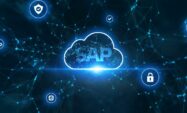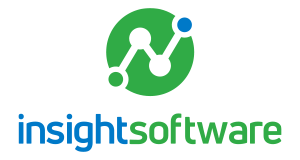Filter By
Browse By
- SAP Analytics and AI
- SAP Application Development and Integration
- All SAP Application Development and Integration
- SAP ABAP
- SAP ABAP Development Tools
- SAP ABAP Test Cockpit
- SAP API Management
- SAP BAPI
- SAP Basis
- SAP BRF
- SAP Business Application Studio
- SAP CMS
- SAP Design Studio
- SAP Development Tools
- SAP DevOps
- SAP EAI
- SAP EDI
- SAP Extension Suite
- SAP Fiori
- SAP Fiori Elements
- SAP Integration Suite
- SAP Low Code Application Development
- SAP Low Code Automation
- SAP Netweaver
- SAP Release Management
- SAP UI5
- SAP Web Application Server
- SAP Web IDE
- SAP Business Process Management
- SAP Center of Excellence
- SAP CIO
- SAP Customer Experience
- SAP Data and Data Management
- All SAP Data and Data Management
- SAP BW
- SAP BW/4HANA
- SAP Crystal Reporting
- SAP Data Archiving
- SAP Data Center
- SAP Data Governance
- SAP Data Integration
- SAP Data Migration
- SAP Data Quality
- SAP Data Services
- SAP Data Strategy
- SAP Data Visualization
- SAP Data Warehouse Cloud
- SAP DMS
- SAP Document Control
- SAP EIM
- SAP ETL
- SAP ETL Tools
- SAP HANA
- SAP HANA Administration
- SAP HANA Deployment Infrastructure
- SAP HANA Studio
- SAP Master Data
- SAP Master Data Governance
- SAP MDM
- SAP Enterprise Architect
- SAP Enterprise Asset Management
- SAP ERP
- SAP Finance
- All SAP Finance
- SAP Accounting
- SAP AR AP
- SAP Asset Accounting
- SAP Billing Systems
- SAP BPC
- SAP BRIM
- SAP Cash Management
- SAP Central Finance
- SAP Controlling
- SAP COPA
- SAP Cost Center Accounting
- SAP e-invoicing
- SAP FICO
- SAP Finance Automation
- SAP Financial Closing Cockpit
- SAP Financial Consolidation
- SAP Financial Planning
- SAP FX Risk
- SAP General Ledger
- SAP Global Tax Management
- SAP Hyperion
- SAP Order to Cash
- SAP Payment Processing
- SAP Profitability Analysis
- SAP Rebate Management
- SAP S/4HANA Finance
- SAP Universal Journal
- SAP Governance Risk and Compliance
- SAP Human Capital Management
- SAP Intelligent Technologies
- SAP Platform and Technology
- All SAP Platform and Technology
- SAP Business Technology Platform
- SAP Cloud Connector
- SAP Cloud Integration Platform
- SAP Cloud Migration
- SAP Cloud Platform
- SAP Cloud Providers
- SAP Cloud Strategy
- SAP Container Platform
- SAP Digital Asset Management
- SAP Digital Integration Hub
- SAP Digital Signature
- SAP HANA Enterprise Cloud
- SAP HEC
- SAP Hyperscalers
- SAP Infrastructure
- SAP Messaging
- SAP Smart Forms
- SAP Quality and Testing
- SAP Security
- SAP Spend Management
- SAP Supply Chain Management
- All SAP Supply Chain Management
- SAP APO
- SAP Asset Management
- SAP Business Network
- SAP Digital Manufacturing Cloud
- SAP Digital Twin
- SAP EWM
- SAP IBP
- SAP Inventory Management
- SAP Label Printing
- SAP Logistics
- SAP Manufacturing
- SAP Manufacturing Automation
- SAP MES
- SAP MII
- SAP MM
- SAP MRO
- SAP MRP
- SAP Order Management
- SAP Plant Maintenance
- SAP PLM
- SAP Production Planning
- SAP S&OP
- SAP SD
- SAP SPM
- SAP Supply Chain Planning
- SAP Track and Trace
- SAP Transportation Management
- SAP System Administration
What is SAP ERP?
An Enterprise Resource Planning (ERP) system makes it possible for organizations to run within a single system their core processes for finance, manufacturing, human resources (HR), supply chain, services, procurement, and other key business functions.
What is SAP ERP?
An Enterprise Resource Planning (ERP) system makes it possible for organizations to run within a single system their core processes for finance, manufacturing, human resources (HR), supply chain, services, procurement, and other key business functions.
SAP ERP solutions are based on over 40 years of experience across all industries and business sizes. They leverage technology that is constantly updated to build ERP tools that can be constantly updated.
The first official SAP ERP solution was the introduction of mySAP ERP in 2004, although this was based on much of the functionality and experience SAP had gained with the SAP R/2 and SAP R/3 business application software suites. While the mySAP ERP solution was targeted at a smaller audience, SAP ERP Central Component (SAP ECC) was introduced in the same and provided all the core business processing capabilities along with data warehouse and enterprise management capabilities in a single system.
The most recent SAP ERP system, SAP S/4HANA, was introduced in 2015 and was a significant shift for SAP as it runs exclusively on the SAP HANA database. A software-as-a-service version of the solution, SAP S/4HANA Cloud, was introduced a year later in 2016. There is a new major release of the on-premise version of SAP S/4HANA each year, while the cloud editions are released quarterly. SAP has announced that they will end the mainstream maintenance and support of all ERP systems other than SAP S/4HANA at the end of 2027.
SAP started to shift their strategy in 2020 to focus more on the cloud-based software-as-a-service ERP system SAP S/4HANA Cloud. This has been done in conjunction with a shift in messaging toward cloud ERP. While most SAP ERP customers are still running older solutions such as SAP ECC, this focus on cloud ERP has been done in conjunction with RISE with SAP.
The biggest factors impacting organizations’ move to newer SAP ERP systems include the opportunity to re-engineer processes or correct configurations from an older system, the upcoming end of maintenance of existing ERP releases, and a desire to transform existing solutions and create a centralized model and structure.
SAP has many implementation partners that will assist organizations with either their initial SAP ERP deployment or a move to SAP S/4HANA from an earlier ERP release. These range from global solution service partners like Capgemini, Cognizant, Deloitte, and T-Systems to smaller partners like smartShift and SoftwareONE that offer solutions and software to help with migration, as well as partners specializing in the migration process itself like Lemongrass.
What Does SAP ERP Do?
An Enterprise Resource Planning (ERP) system makes it possible for organizations to run within a single system their core processes for finance, manufacturing, human resources (HR), supply chain, services, procurement, and other key business functions. SAP ERP solutions are based on over 40 years of experience across all industries and business sizes. They leverage technology that is constantly updated to build ERP tools that can be constantly updated.
By centralizing key functions like sales, security, analytics, and much more into one SAP system, an ERP can help provide a more interconnected experience for users and business leaders. Relying on an ERP can help standardize security measures, help boost sales performance, making the overall experience better for both users and customers.
Benefits of SAP ERP
SAP ERP systems offer significant benefits to their customers. These solutions are available to organizations of all types and sizes. One of the chief benefits is flexibility. SAP ERPs are easily customizable, both in terms of the applications themselves and how they connect and interact within a network overall. ERPs are available in public and private clouds, so users can have online access to the network from anywhere. They can also be used in on-premise only scenarios, offering users the option to keep their IT and security in-house. ERP systems from SAP centralize critical business functions like planning, analytics, and finance all in one place. This saves employees from significant manual work, allowing them to instead spend their time on more value-added tasks.
Types of SAP ERP Systems
Organizations range in size, operate in different industries, and may have unique business needs, so SAP offers several different ERP solutions to meet these challenges.
SAP’s flagship ERP solution is SAP S/4HANA. Released in 2015, this ERP solution runs exclusively on the SAP HANA database. It features modules like Asset Management, Finance, Human Resources, Manufacturing, R&D/Engineering, Sales, Service, Sourcing and Procurement, and Supply Chain. These modules all have different features and functions to meet the needs of their industry.
The full-scale ERP suite is used by companies of all different sizes and provides organizations with the flexibility to respond to shifting business environments. Recent versions of SAP S/4HANA now feature enhanced technological features like machine learning, automation, AI, and other capabilities.
The primary reason that organizations opt for SAP S/4HANA is its simplicity. The system standardizes and simplifies IT and business processes throughout organizations by acting as the core of the business. It can centralize data access from sources within other SAP systems and outside of SAP. This provides business leaders with end-to-end visibility, enhancing their decision-making capabilities.
SAP S/4HANA relies on SAP Fiori as its user interface, which makes interacting with the ERP system a more personalized and user-friendly experience.
SAP S/4HANA is not SAP’s only ERP offering. For smaller and midsize businesses, SAP offers Business One. Billed as a “a long-time favorite of smaller firms and subsidiaries of large enterprises” by SAP, SAP Business One also features cloud capabilities on a more affordable scale for businesses with fewer processes to oversee.
SAP also offers midsized firms a more specialized cloud-based ERP suite known as SAP Business ByDesign. Designed to meet the needs of organizations that are scaling rapidly, SAP Business ByDesign also connects core functions across the breadth of an enterprise.
Some organizations still run on SAP ECC 6.0, a legacy system that predates SAP S/4HANA as SAP’s flagship ERP. That ERP system is being phased out as SAP pushes organizations to complete the transition to SAP S/4HANA. Support and maintenance for the legacy SAP ECC ERP will come to an end in 2027, though SAP does offer users the option of using the SAP ECC 6.0 Enhancement Pack 8 through 2030. Yet to make the most out of an SAP ERP system and gain the benefits of flexibility and the full power of SAP HANA, it is recommended that companies make the switch to SAP S/4HANA.
Organizations should perform a self-evaluation and research the different possibilities to determine which SAP ERP benefits would bolster their enterprise processes the most.
Join SAPinsider to access opportunities for networking and engagement in the dynamic SAP ecosystem. As a member, you will have access to a wealth of valuable resources and content tailored to SAP technologies and best practices like the latest research reports, articles, webinars, and events that will keep you informed and ahead of the curve.SAPinsider membership grants you exclusive access to in-depth analyses, expert insights, and practical guidance that will empower you to navigate the ever-evolving SAP landscape with ease. SAPinsider membership will enable you to remain one step ahead and harness the latest trends, innovations, and strategies to drive your own powerful digital transformations, optimize your SAP investments, and unlock business success.
78 results
-

Strategies for Successful SAP Implementation for Mergers & Acquisitions
Published: 31/January/2023
Reading time: 5 mins
During mergers or acquisitions, there is a possibility that the acquired companies may be using 20 percent new business processes along with new systems like MES (manufacturing execution systems). This requires a plan to integrate such systems with SAP. The strategy should involve taking inventory of the systems and applications of acquired companies, and deciding…
-

How to Become an even smarter ERP Test Manager
Published: 24/January/2023
Reading time: 1 min
As an ERP test manager, you are responsible for some of the most important behind-the-scenes work, ensuring that your enterprise resource planning system is ready and able to perform its role of streamlining complex mission-critical processes. A single workflow may involve multiple personnel, various skillsets, changing conditions, and several links in a value chain of…
-

Insights from SAP Master Data Professionals
Published: 05/December/2022
Reading time: 1 min
To thrive in today’s competitive and increasingly digital economy and effectively launch new products, your materials master data processes must be fast and efficient. If you’re responsible for improving SAP master data processes, this eBook is for you. You’ll learn which strategies you need to implement to speed up your materials and other master data…
-
-

Fujitsu Case Study: Bringing Digital Transformation to the Entire Testing Process
Published: 28/November/2022
Reading time: 1 min
Fujitsu embarked on a company-wide digital transformation initiative to standardize work processes and data. The needs were efficiency, internal communication, data sharing, cost-effectiveness, and automation. The impact was significant, with a 35% reduction in labor-hours, easy reuse of test scenarios, overtime hours slashed, and more. This case study illustrates how Fujitsu leveraged Panaya to achieve…
-

- SAP ERP
 Premium
Premium
SAP CMSO Julia White Leads the Charge for ERP in the Cloud
Published: 14/November/2022
Reading time: 10 mins
As SAP celebrates its 50th anniversary, it’s implementing new solutions driven by its newly appointed Chief Marketing and Solutions Officer and member of the Executive Board, Julia White. She joined the company in 2021 after growing Microsoft Azure into a top cloud offering, and now she’s on a mission to take SAP beyond ERP. SAPinsider…
-

Can I enable my legacy SAP (R/3, ECC, ERP, SRM, CRM, SCM etc.) system with S/4HANA like User experience?
Published: 27/October/2022
Reading time: 1 min
Enable my legacy SAPR3 system with S/4HANA like user experience – You have undoubtedly heard of Greenfield, Brownfield, Bluefield approaches when moving to S/4HANA. Are only these three approaches existing in the market? What happens to the historical data? Carrying all 10-15 years (in some customers 20+ years) of data to S/4 HANA will defeat…
-

- SAP ERP
 Premium
Premium
Achieving Business Benefits through Compelling Investments
Published: 19/September/2022
Reading time: 4 mins
As IT professionals and SAP advocates, maintaining the reliability of our existing infrastructure and application environments is job one. And our ability to improve our businesses with the goal of achieving success is just as important after we have achieved reliability. Let’s be honest, if the business critical systems aren’t reliable, we spend significant time...…
-
-

Dole Packaged Foods (Dole) Seeks Optimal Path to Public Cloud
Published: 15/September/2022
Reading time: 4 mins
Cost optimization, without compromising the quality of service, is a primary consideration for any business. Learn how an ERP design across multiple availability zones (AZs) can improve flexibility to scale a system infrastructure up or down as needed. With workloads split between two zones, you can free up capital to invest in strategic business initiatives.…
-

SAP’s 2022 Strategy Focuses on Cloud ERP and RISE with SAP
Published: 02/May/2022
Reading time: 5 mins
The mid-term ambition that SAP continues to work towards targets more than €22 billion in cloud revenue by 2025. This goal was initially announced during their Q3 earnings presentation in 2020, and it was reiterated by SAP during their recent Q1 2022 earnings call. The fact that, in this most current quarter, SAP recorded strong…
-

- SAP ERP
 Premium
Premium
Boost Operational Efficiency with Modern ERP Workflows
Published: 22/February/2022
Reading time: 4 mins
Digital transformation and operational efficiency are on the minds of every organization these days, and the COVID19 pandemic has only accelerated this preoccupation. Organizations need to overcome several roadblocks on the digital transformation journey to achieve operational efficiency. These include inefficient legacy ERP infrastructure, manual and siloed workflows, and poorly designed workarounds, such as batch…
Become a Member
Unlimited access to thousands of resources for SAP-specific expertise that can only be found here.
Related Vendors
Your request has been successfully sent

